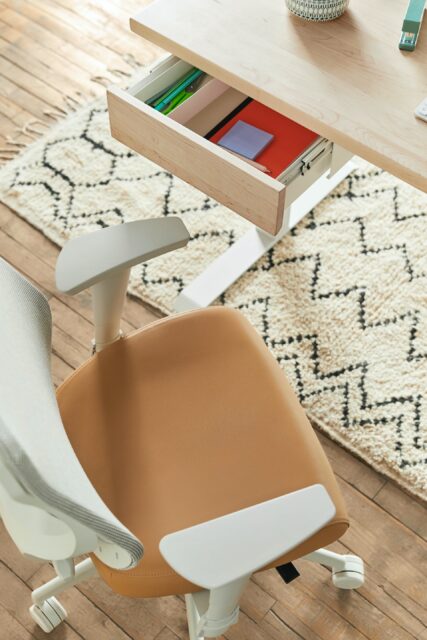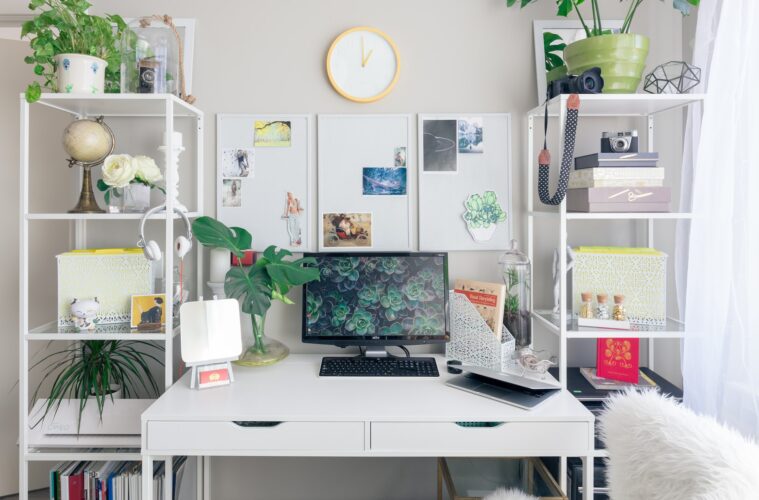You’ve been meaning to study for weeks, but somehow every time you sit down at your desk you end up browsing social media or watching Netflix. If this sounds familiar, it might be time to create a dedicated study space. It’s necessary even when you’re searching for where to buy essays online and writers who want to help you with your essay paper for college.
Having a designated area for studying can help you focus and be more productive. A study space that is both comfortable and functional can be the difference between struggling through another all-nighter and breezing through exams. But how do you create the perfect study space? Follow these eight simple steps and you’ll be on your way to acing your exams in no time!
1. Define Your Study Space
The first step to creating a dedicated study space is defining the space itself. This means deciding what room you’ll use, and how you’ll customise that room to support your studying needs.
Depending on your living situation, you might have a lot of freedom to choose any room in the house, or you might need to be a bit more creative. If you live in a shared space with roommates or parents, you’ll need to be respectful of others’ needs. If your partner is a light sleeper, studying late at night is going to be a constant struggle.
No matter what your living situation, there is a solution for every studying need. Even if you have to spend time at the local library or a coffee shop, reaching away from home can help you recharge your batteries and escape distractions.
2. Add Music (Or Not)
It’s true: Music can help get you pumped to study long hours. But it can also help calm your busy mind when you need a break. It’s totally up to you! If you do choose to listen to music, we recommend listening to soft music or no music at all during eye breaks. Loud music can be distracting during these short periods of time.
A cool alternative to music is a study playlist—a playlist of songs that soothe your mind and ease your stress (such as lullabies or relaxing instrumentals). You can switch between the two, depending on your study needs.
3. Choose A Desk
Choosing the right desk for your study space is key. If you already have a desk in your designated study space, great! If not, there are lots of benefits to choosing a sturdy wooden desk rather than a plastic desk (which might be cheaper). The wood helps to dissipate heat, which makes your legs feel cooler and more comfortable.
Wooden desks also have a lot more style and character, and they can be a great addition to any study space. Plus, a wooden desk will cost you less per month than a plastic desk over the lifetime of the loan (which is about four years). You can buy a solid wood desk online for around £200, which is a great investment in your academic and career success.
4. Get A Chair

Because university lectures can run long, it’s important to sit in a chair that is ergonomically designed to keep your back happy and supported for long periods of time. Students at university tech schools often swear by the trendy hover chairs (which don’t have legs), but they aren’t for everyone.
5. Add Comfort
You might not think about it, but sitting in the same spot for hours on end can get tiring on your legs. To help relieve some of that strain, add a rug to your study space. Floor cushions can also help with leg discomfort as well as provide added support and padding. If you don’t have a lot of floor space, don’t forget about wall-mounted cushions as an option as well. A chair cushion can also help make your chair more comfortable.
Wall decorations (such as prints, posters, flags, or artwork) can help spruce up your space and provide a much-needed change of scenery. This can help keep you motivated and inspired as you tackle the endless piles of homework.
6. Take Care Of Your Eyes
We’ve all been there: You’re studying for hours on end without so much as a break, and then suddenly your eyes start to feel tired and strained. To prevent full-on eye strain, add some visual interest to your study space with vibrant colours and patterns. This will stimulate your senses and can relieve the boredom of long studies.
And while you’re at it, make sure your computer screen is free of glare (especially during the summer when sunny days linger long into the evening). Easy fixes include: placing a mirror underneath your screen to bounce light and eliminate glare; hanging fabric over your screen; or buying an anti-glare computer monitor + keyboard set.
7. Prepare Healthy Snack Options
It’s important to eat while you’re studying—after all, energy comes from food. But boring old spinach leaves and an apple don’t make for a very tasty study snack. (just kidding, please eat your greens).
In reality, you can snack on whatever your heart desires. Just try to stick with healthy options. But remember not to eat a full meal while you’re studying; save the full meal for after you’ve finished your long day.
A cool idea: Make your own study snack basket filled with all your favourites. It’s like a surprise gift to yourself every time you sit down to work.
8. Find A Soothing Colour
While choosing the right colour for your study space is a highly personal choice, finding a soothing colour can help calm your mind and ease the stress of long studies. We recommend trying out these colours for starters:
Blue/Grey: Studies have shown that grey and blue are calming colours. They can also help you focus.
Yellow: This colour can boost your concentration and improve your memory.
Red: This colour is powerful and stimulates the senses. It can help you wake up when you’re feeling sleepy during long studies.
Brown/Beige: These earthy colours can help reduce eye strain when studying for long hours.
Long study sessions can help you get the most out of your time as a student. By following these tips, you’ll quickly have a functional and fun study space that will help you breeze through your homework and prepare you for long days of class. And when you’re done with school for the day, this space will also make for a great place to relax and enjoy some downtime!



